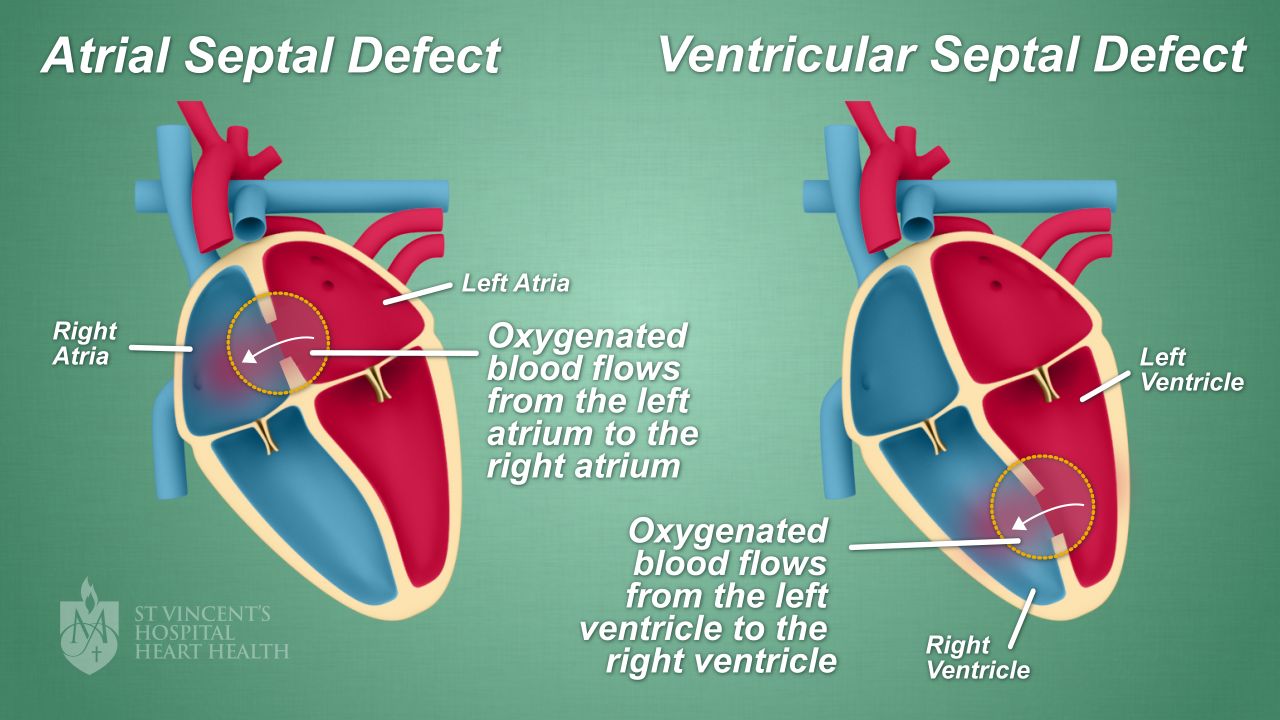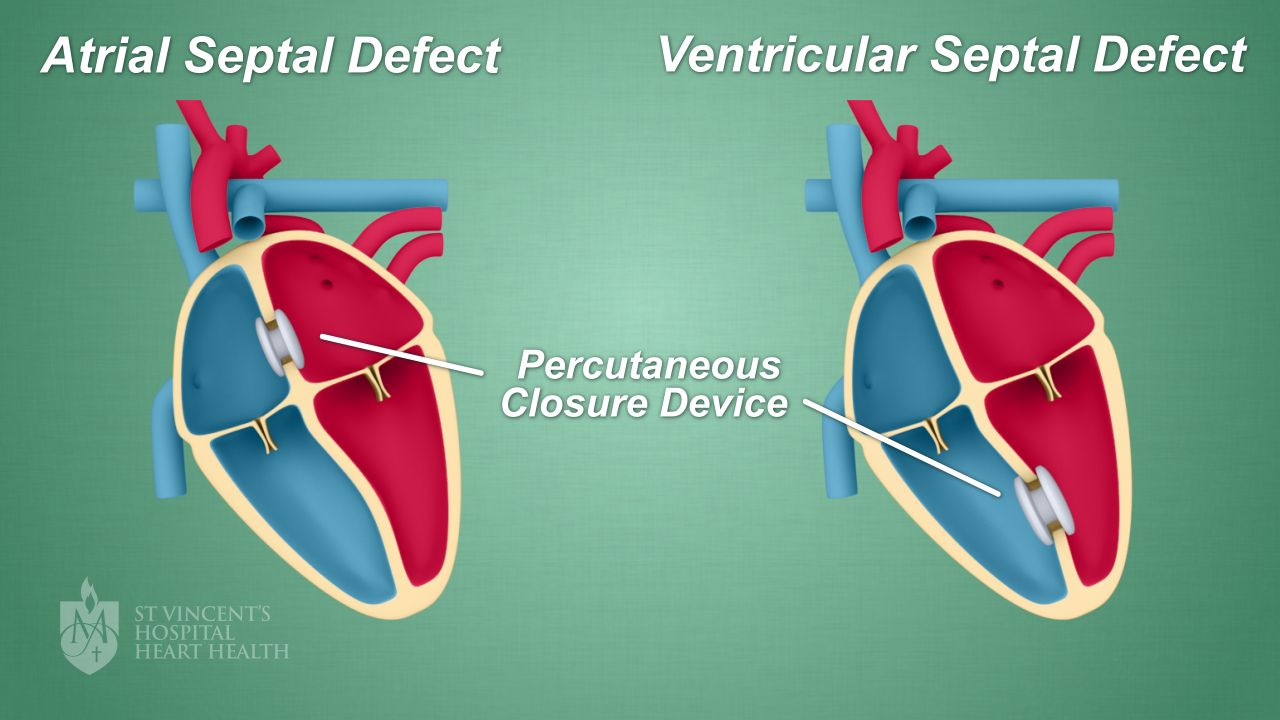Septal Defect "Hole in the heart" Closures
Closures of atrial septal defects (ASD) and ventricular septal defects (VSD) are treatments to repair holes in your heart.
What are atrial and ventricular septal defects?
What are atrial and ventricular septal defect closures?
Why do I need an ASD or VSD closure?
What are the risks of an ASD or VSD closure?
How do I prepare for an ASD or VSD closure?
What happens during an ASD or VSD closure?
What happens after an ASD or VSD closure?
What are atrial and ventricular septal defects?
Septal defects are openings in the wall (septum) of your heart. They are congenital, meaning you’re born with them. If you have an ASD, the opening occurs in the septum between both top chambers of the heart (atria). The diagram below shows you what this looks like.
If you have a VSD, the opening occurs in the septum between the lower chambers of the heart (ventricles).
This image below shows an ASD and VSD

What are atrial and ventricular septal defect closures?
Atrial septal defects (ASD) and ventricular septal defects (VSD) closures are treatments that repair holes in your heart, known as septal heart defects.
Why do I need an ASD or VSD closure?
Your doctor will recommend having your septal defect closed if you have an ASD or VSD and are feeling symptoms such as:
- Shortness of breath
- Tiredness and weakness after exercise or activity
- Irregular heart rhythms - arrhythmias
- Fainting
What are the risks of an ASD or VSD closure?
As with any procedure, there are risks associated with ASD and VSD closure treatments.
Common risks can include:
- Allergic reaction to the dye used during the procedure
- Irregular heartbeat, called arrhythmia
- Bruising
- Bleeding
- Infection
Rare risks can include:
- Embolus, when an air bubble or blood clot blocks the blood flow in a small blood vessel
- Device becoming dislodged
- Death
Your doctor will explain the risks to you in detail before you agree to the surgery - and you’re also encouraged to discuss any questions or concerns with your medical team. Your doctor will ask you to sign a consent form before you have the surgery.
How do I prepare for an ASD or VSD closure?
You will not need to change your usual routine before your closure treatment, but you can prepare by:
- Asking your doctor if you are able to take your usual medications. If you take SGLT2 medicine for diabetes, you will need to stop taking them at least 3 days before your surgery. Read our Patient Information Guide on SGLT2 inhibitors for diabetes.
- Not eating or drinking for at least 6 hours before the procedure
Before your procedure begins, you’ll be asked to remove any jewellery and put on a hospital gown.
What happens during an ASD or VSD closure?
There are two options for septal defect closure procedures: percutaneous and surgery.
Percutaneous repair means the holes are repaired through your skin without needing surgery. During this procedure:
- A local anaesthetic is given to your groin to numb the area
- A special catheter with the closure device inside it is gently inserted in your groin and guided slowly up to your heart at the location of the hole
- Once in the correct position, the device is released from the catheter and plugs up the hole
This image below shows you a percutaneous ASD and VSD closure.

If your doctor recommends surgical repair, your surgery will take place in a hospital operating theatre. You will be taken to the operating room on a trolley or wheelchair and asked to lie on a narrow table. The procedure is performed under general anaesthetic, which means you will be given medications before your surgery to relax and make you fall asleep.
After you are asleep:
- You will be connected to a heart-lung bypass machine which controls your heartbeat
- Your doctor will make an incision in your chest
- The hole will be covered using a special type of patch which is permanently attached to your septum
- The incision will be closed
What happens after an ASD or VSD closure?
After your procedure, your doctor will monitor you closely and tell you how long you need to stay in hospital.